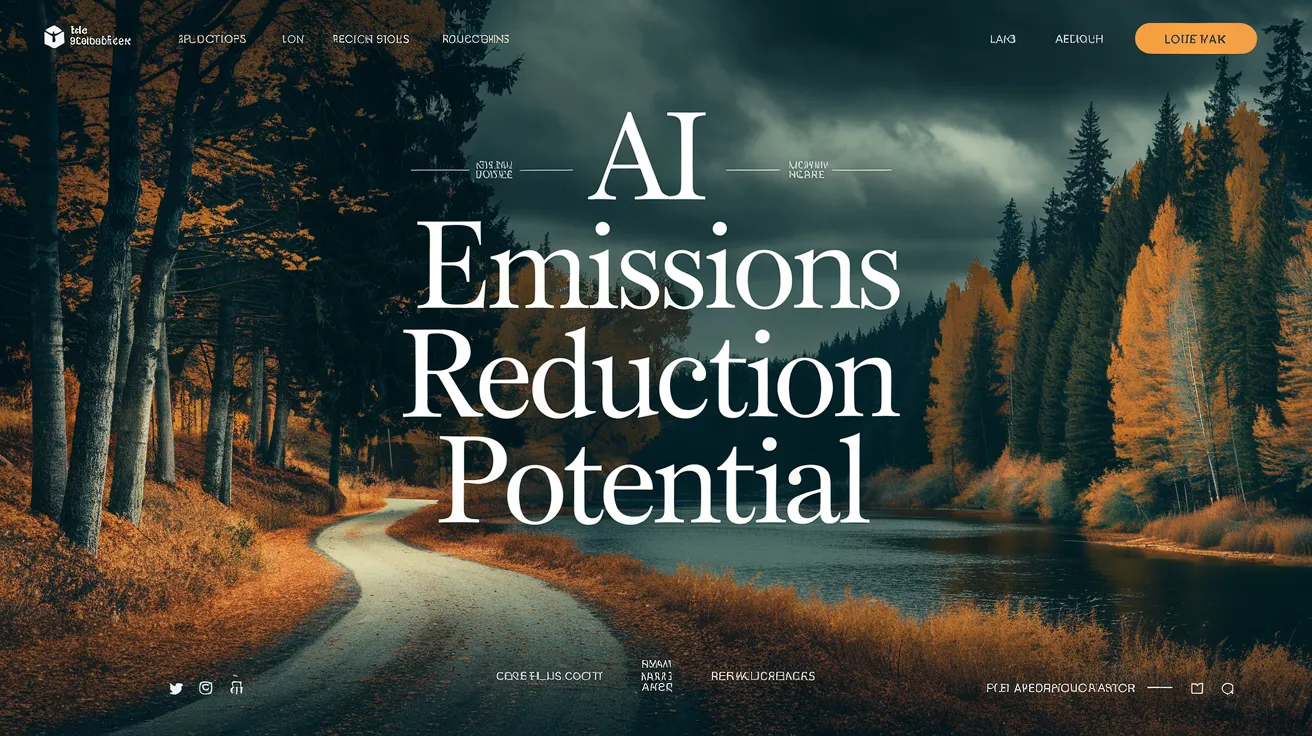AI Emissions Reduction Potential

Recent research suggests that artificial intelligence (AI) could significantly mitigate global climate pollution by as much as 5.4 billion metric tons annually over the next decade. This substantial reduction is contingent upon effectively deploying AI technologies in key areas such as transportation, energy, and food production, ultimately surpassing the additional emissions generated by the energy-intensive data centers powering these AI systems.
Research Insights from the Grantham Institute
The Grantham Research Institute’s findings, published in the journal npj Climate Action, emphasize the potential of AI to accelerate the adoption of low-carbon solutions. The report notably states that strategic regulation by governments is critical to minimize AI’s environmental footprint, advocating for the development of energy-efficient AI models and the utilization of renewable energy in powering data centers.
The Role of Government in AI Adoption
The authors of the study highlight the necessity of governmental investment in AI infrastructure and educational initiatives in developing nations to ensure equitable benefits from AI advancements. This approach could create a collective effort to harness AI technologies effectively while addressing climate issues.
Challenges of Energy Consumption in AI
Despite the promise that AI holds, notable concerns arise regarding its increasing energy consumption. As AI technologies expand, the International Energy Agency projects that data centers may consume double the amount of electricity by 2030 compared to current levels. This surge in demand presents challenges for energy grids, particularly in the context of oil companies leveraging AI for fossil fuel exploration and extraction.
Mitigation Strategies for Emissions
Fortunately, the Grantham study outlines five specific areas where AI can be actively leveraged to diminish emissions. These include guiding consumer behavior, managing energy efficiently, and advancing technological innovations. For instance, AI can facilitate the integration of renewable energy sources into power grids by forecasting supply and demand fluctuations more accurately, thus easing concerns regarding intermittency and reliance on polluting backup resources.
Potential for Transformative Effects on Emissions
Roberta Pierfederici, a policy fellow at the Grantham Research Institute, articulated that improving power grid efficiencies can yield reductions in emissions across various economic sectors. Moreover, AI can aid in identifying sustainable protein alternatives to meat and dairy, both significant contributors to greenhouse gas emissions. Additionally, the technology might revolutionize transportation by improving battery efficiencies for electric vehicles and promoting shared mobility solutions.
Future Efficacy of AI in Climate Mitigation
The combined impact of these strategies could lead to emissions reductions of 3.2 billion to 5.4 billion metric tons of carbon dioxide equivalent by 2035, surpassing emissions levels of the entire European Union. While this projection does not fully align with the targets needed to limit the global temperature rise to below 1.5 degrees Celsius, it nonetheless offers a promising outlook for offsetting the emissions associated with AI utilization. The study estimates that energy-related emissions from AI data centers may escalate to between 0.4 to 1.6 billion metric tons over the following decade.
While acknowledging the study’s limitations due to the rapid evolution of AI technologies, Pierfederici remains optimistic about AI’s role in addressing climate change. She posits that a proactive governmental influence is essential in shaping AI applications for climate resilience. This governance will help manage potential downsides while maximizing AI’s capacity for meaningful climate action.
Reprinted from E&E News with permission from POLITICO, LLC. Copyright 2025. E&E News provides essential news for energy and environment professionals.